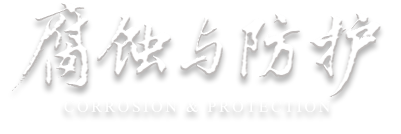Abstract:
A trivalent chromium zirconium based chemical conversion process film preparation process on 2024-T3 aluminum alloy was developed, with K
2ZrF
6 and Cr(OH)SO
4 as the main salts and NH-2 as an additive. The influence of K
2ZrF
6, Cr(OH)SO
4, and NH-2 additive mass concentration, working fluid temperature, pH, and chemical oxidation time on the corrosion resistance of the conversion film was studied through a rapid drop test of copper sulfate. The corrosion resistance, film adhesion, surface morphology, and element distribution of the conversion film were tested using neutral salt spray test (NSS), grid cut method, field emission scanning electron microscopy (SEM), and energy dispersive spectrometer. The results show that the chemical conversion solution prepared with 10 g/L K
2ZrF
6, 1.2 g/L Cr(OH)SO
4, and 0.72 g/L additive NH-2 exhibited excellent corrosion resistance when oxidized for 5 minutes at 40 ℃ and pH 3.8. The conversion film did not corrode during the 168 hour continuous neutral salt spray test. The adhesion strength of the paint film was level 0. The conversion film was composed of countless continuous particles with a diameter of tens of nanometers, which could protect the substrate. The film layer was mainly composed of elements such as O, Al, Cu, Mg, Zr, Cr, F, etc. The Cr element in the film layer was trivalent chromium, without hexavalent chromium, which was an environmentally friendly chemical oxidation process for aluminum alloys.

 下载:
下载: